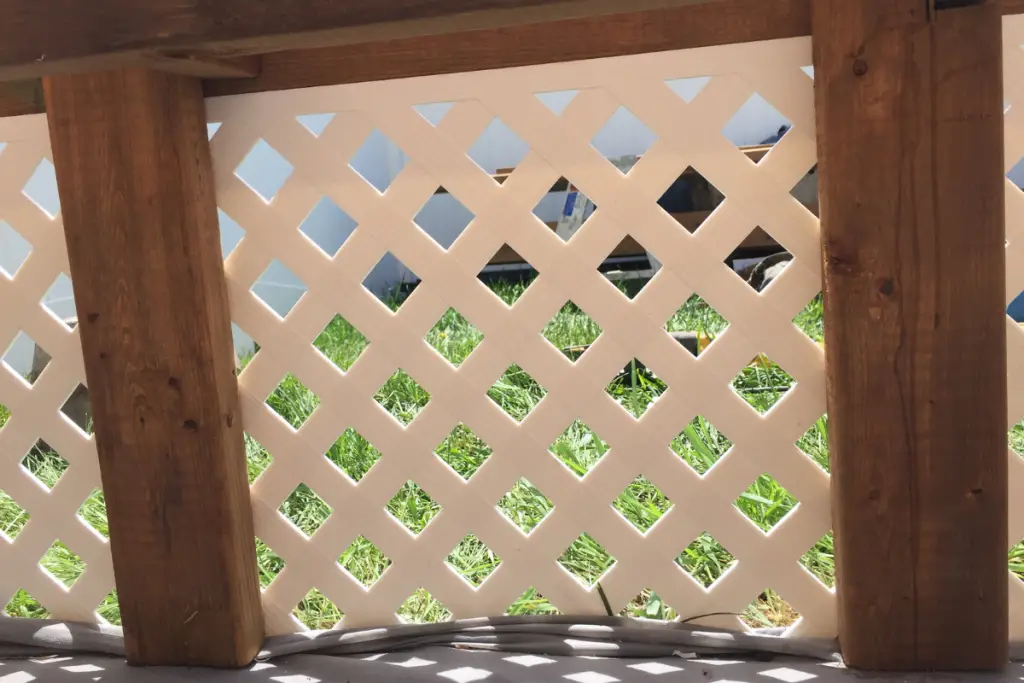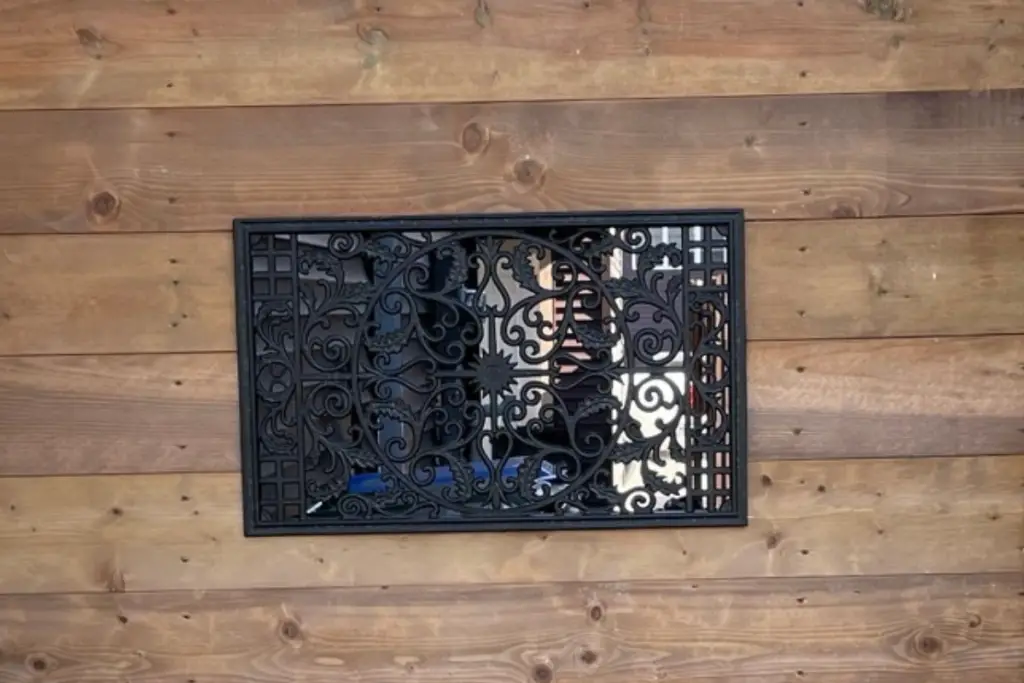Having a deck is a great addition to any outdoor space, but it’s important to remember that proper under-deck ventilation is essential for the overall health of your deck. Whether you choose wood or composite decking, good ventilation helps protect and extend the life of your investment by preventing moisture buildup, reducing mould growth, and promoting air circulation around the structure.
In this article, we’ll explore why ventilation under your deck is so important, along with tips on to create the essential airflow under your deck best.
But let’s start with the essential why before getting to the how.
Why Does A Deck Need Ventilation?
Trapped moisture under a deck is doing three things.
It increases the amount of rot and decay on the wood substructure, the joists and beams of your deck. Weaken the support structure of your deck. Significantly decrease the expected life of your deck.
And even worse, treating the potential for deck failure as the weakened joist can break under the load it was originally able to hold.
Second, trapped moisture under a deck will increase the amount of cupping, and twisting of the decking. As the decking will be moist on the underside but dry on the top. This uneven humidity level causes the top of the decking to contract while the bottom expands to absorb the moisture. Twisting the decking right under your feet.
And don’t think because you installed composite decking, that ventilation doesn’t matter. But more on that later.
Plus, pooling water under a deck serves as a breeding ground for mosquitos and wood-damaging insects.
Mosquitos require standing water to reproduce; stagnated rain pooled or the condensation from trapped moisture under your deck can provide them with the environment they need.

Annoying mosquitos hatching under your deck is not the only problem with increased moisture under your deck. Wood-eating insects also thrive with increased moisture. Wood with a moisture content of greater than 20% is ideal for wood-boring insects that eat away at the structural strength of your deck.
How Much Ventilation Does a Deck Need?
A deck raised above the ground 18″ (458mm) that is not enclosed by skirting doesn’t need anything more than good ground cover, and nature will do the rest.
Decks enclosed with skirting will need air flow designed into their design.
A deck needs a minimum of one square foot of ventilation for every 150 square feet of deck to allow moisture to escape from under the deck. Allowing for drying the underside of the decking and substructure, preventing rot, mould and decay from destroying the deck. Ventilation needs to be on both sides of the deck for dry air can enter one side while pushing the moist air out the other side.
This should not be a single vent but venting across from each other to allow for cross venting of moisture under the deck.
How to Add Ventilation Under a Deck?
Now that you understand why ventilation under a deck is so important, here are the best ways to ensure your deck has proper airflow.
- Skirting Vents
- Gapping between skirting boards
- Increase Decking Gaps
A deck enclosed with skirting should include a grill or screen allowing air movement under the deck.
This doesn’t have to be fancy, though a decorative grill will add to the look of the deck. But it can be as simple as a return air grill covering a hole. Preventing rodents from getting under the deck while allowing air movement.
With skirting vents, remember the rule of 2. Every vent should have a similar vent on the other side of the deck to allow for cross-air movement.
Another option to increase airflow under a skirted deck is with gaps between the skirting material .
.
This can be as simple as installing lattice as skirting provides plenty of airflow.

Another option is to gap the skirting boards by 3/4″ (18mm) to allow the underside of your deck to breathe between the gaps.
Finally, not as beneficial as ventilation in the skirting is to increase the gapping between the decking. Gapping decking is primarily for water runoff but can also help moisture escape from under the deck.
Fiberon recommends increasing the gaping to between 1/4″ and 3/8″ (6-9.5mm) for decks with limited ventilation. More than 3/8″ (9.5mm) makes the deck uncomfortable to walk on.
¼ inch (6 cm) with a maximum of 3/8 inch (9.5 mm) gap.
How to Minimizing Moisture Under a Deck Beyond Ventilation
There are a number of ways to reduce water under a deck beyond ventilation.
- Non-organic material over landscape fabric
- Clearance under deck joist
- Grade the ground under the deck
There are many different types of ground cover material options for under a deck . But the best for moisture is gravel or crushed stone that allows water to drain. Place over landscape fabric will allow the moisture to soak into the ground and away from the underside of the deck.
. But the best for moisture is gravel or crushed stone that allows water to drain. Place over landscape fabric will allow the moisture to soak into the ground and away from the underside of the deck.
Gravel also prevents fungi from the dirt from splashing unto the deck joists. Further minimizing joist rot.
Equally important is grading the ground under the deck. By sloping, the dirt under the deck, rain and water will not pool under the deck. Minimizing the amount of moisture under the deck.
Deck joist clearance allowing for cross ventilation is also key.
To ensure proper air circulation, many deck contractors recommend a minimum of 6″ (150mm) ground clearance. This ensures that there is adequate airflow underneath the deck to keep it cool and well-ventilated. The clearance also keeps the wood away from the fungi in the soil, which can rot the joists.
Does Wood Decking Need Ventilation?
Wood decking can be divided into two groups softwood and hardwood decking.
Softwood decking, commonly, are cedar and Pressure  Treated decking.
Treated decking.
Hardwood decking commonly are Ipe, Cumaru, Garpa and Machiche. Wood classification is not based on wood density but tree type, but with these decking, the hardwood is a denser wood than softwoods.
Softwood decking is least affected by moisture. Pressure-treated decking is treated to prevent mould growth, and being a softwood will expand and contract with minimal damage. Old-growth cedar decking is naturally resistant to rot. Both are the most forgiving of moisture under your deck, with minimal effect from lack of ventilation.
Hardwood decking requires a consistent moisture level for long life. When properly installed is one of the longest-lasting decking.

Ventilation is part of that correct installation and is critical so you can enjoy your deck as long as possible.
But without correct ventilation, do expect cupping, twisting and warping of the decking.
Does Composite Decking require Ventilation?
Our main concern is moisture-causing mould. Mould and fungi can grow on the wood fibres in composite decking. Blacking mould is hard to remove from composite decking. Literally putting a black spot on your deck.
Ventilation under a deck will remove the damaging moisture stopping the wood fibres from swelling from moisture.
Two exceptions are Deckorators (MIneral Based Composite and Moistureshield. Both can be installed near and in water without damaging the decking.
Summary
Decks need to breathe and dry. Regardless of the decking material, a deck needs ventilation. The type of decking may affect the reason for ventilation, but all decks require ventilation. Take some time this summer, relax and take a deep breath, exhaling all of life’s stresses and let your deck do the same.
